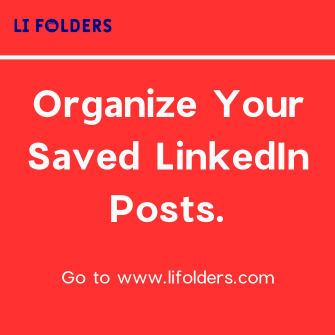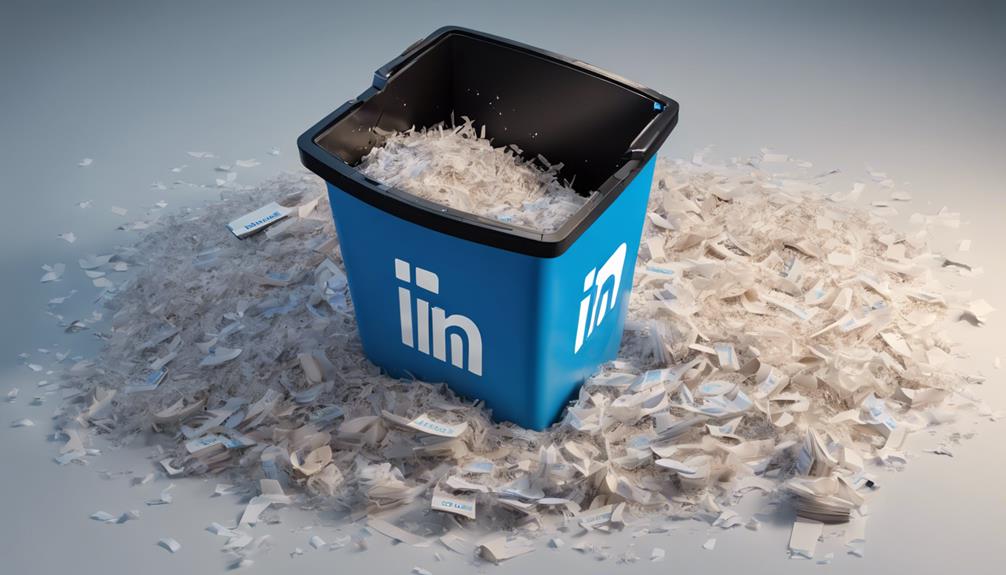
When you delete a LinkedIn message, it doesn't instantly disappear from the servers; instead, it's hidden and remains accessible for a certain period. This buffer time allows you to rethink your decision, preventing any rash actions. Although the message appears gone from your view, it continues to exist on LinkedIn's servers until certain conditions are met for a permanent deletion during routine maintenance. This process ensures your professional interactions are both protected and respected. By respecting each user's privacy and the integrity of professional communications, LinkedIn balances immediate user actions with thoughtful reflection. Further exploration into LinkedIn's deletion practices reveals additional insights into data privacy and management.
Understanding LinkedIn's Deletion Process
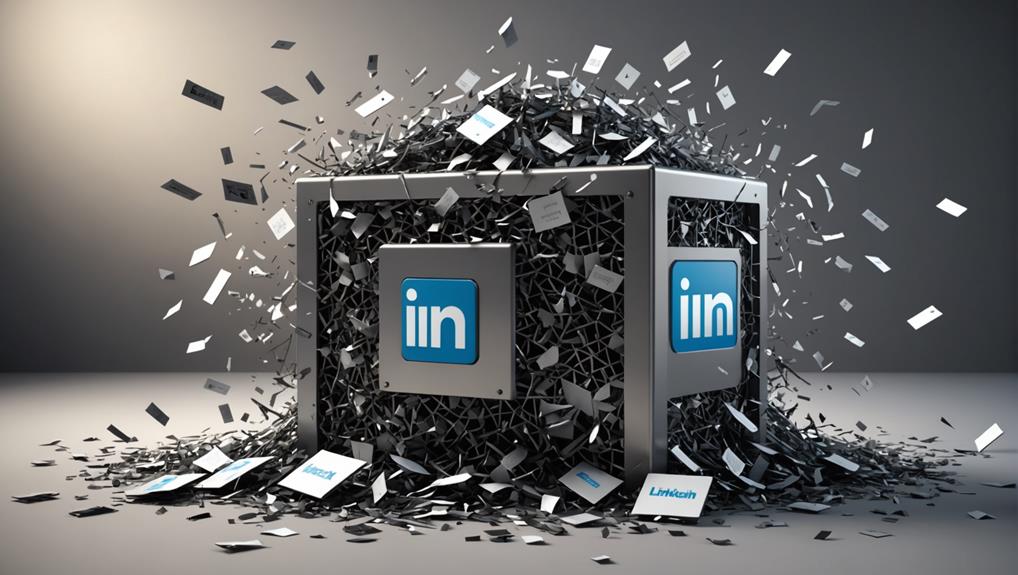
To understand how LinkedIn handles deleted messages, it's important to know that once you delete a conversation, it disappears from your chat history but may not be immediately removed from LinkedIn's servers. You're part of a community that values privacy and control over personal data, and this understanding is central to feeling secure within the network.
When you hit 'delete,' you're likely trying to clean up your digital space or protect your privacy. However, it's crucial to realize that this action doesn't mean the conversation is gone forever instantly. It's more like putting it out of sight while it remains accessible in the deep, less visible layers of the platform for a period.
This retention can actually be reassuring because, in a fast-paced professional world, it's easy to make hasty decisions. Knowing there's a buffer can give you peace of mind, ensuring that in the heat of a moment, nothing is lost permanently without some time to reconsider. This process is not just about following digital protocol but about respecting the community's need for both immediate action and thoughtful reflection. It's a balance designed to protect and empower you and your professional relationships.
The Lifecycle of a LinkedIn Message
Understanding the lifecycle of a LinkedIn message helps you grasp how your communications evolve from sending to potential deletion. When you type out a message and hit send, you're not just firing off text into the void. You're initiating a connection, reaching out to become part of someone else's professional circle. That message is stored on LinkedIn's servers, ready and waiting to be received.
Once delivered, it lands in the recipient's inbox. Here, it's either opened and read, fostering engagement and sparking potential collaboration, or it might linger, waiting to be noticed. Remember, every message you send contributes to building your professional network, enhancing your sense of belonging in your industry.
If a message is deleted, either by you or the recipient, it doesn't vanish immediately. It typically remains in a hidden state on LinkedIn's servers before it's completely purged. During this time, although not visible, it's a reminder of the connections you've attempted to make or maintain. Each message, whether retained or deleted, plays a part in the intricate web of professional interactions that define your place within your community.
Privacy Policies and Data Retention
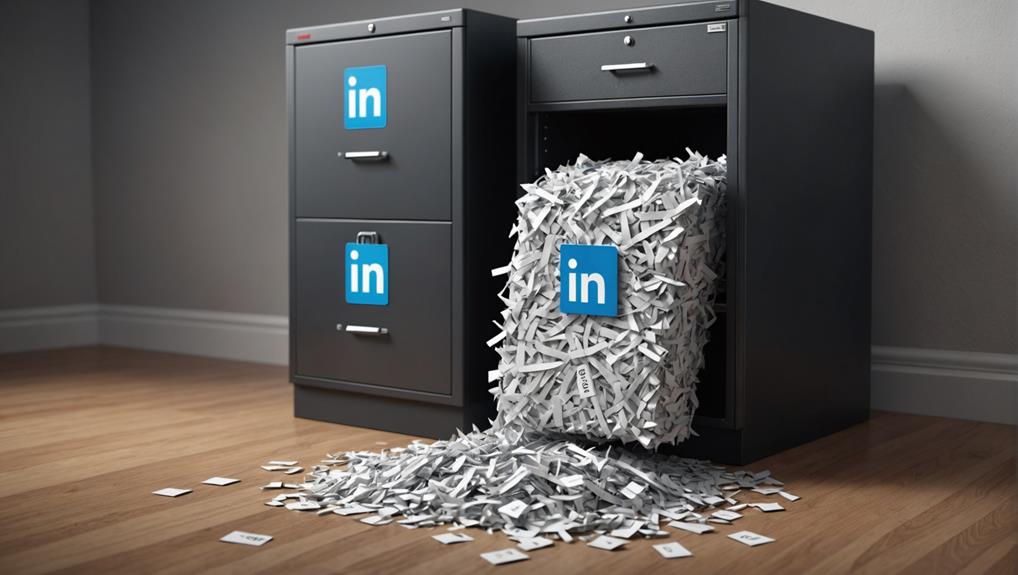
Now let's explore how LinkedIn manages your messages and personal data, focusing on their privacy policies and data retention practices. When you're part of this platform, you're not just using a service; you're entrusting it with your professional interactions and personal information. Understanding how LinkedIn handles this is crucial for feeling secure and valued within the community.
LinkedIn's privacy policy is designed to make you feel protected. When you delete a message, the policy outlines how the platform treats your data with respect to both visibility and storage. This means, although you won't see the message anymore, it doesn't instantly vanish from all systems. LinkedIn keeps certain data for a period, primarily to comply with legal requirements and to ensure the network's stability and integrity.
Your trust is paramount, and LinkedIn commits to transparency about data retention. The specifics of how long your data is held, and under which circumstances it is finally purged, are openly shared in their policy documents. This openness is intended to reassure you that you're a valued member of the LinkedIn community, whose privacy is taken seriously at every step.
Technical Aspects of Data Deletion
Let's delve into how LinkedIn technically handles the deletion of your messages. When you decide to delete a message, you're initiating a process that's more complex than just removing text from a screen. Essentially, you're telling LinkedIn's servers to sever your access to that piece of communication.
Once you hit delete, LinkedIn marks the corresponding data for deletion in their databases. This doesn't mean it's immediately wiped out. The data enters a queue to be erased during routine system maintenance. This process ensures that LinkedIn can manage its storage efficiently without disrupting the service for users like you.
It's also worth noting that this deletion doesn't happen in isolation. If the message was part of a conversation, the system assesses whether the other participants have also deleted the message on their end. The message remains accessible to others in the conversation until all parties have deleted it, ensuring that everyone's on the same page—fostering a sense of mutual respect and coordination among users.
Implications for User Privacy
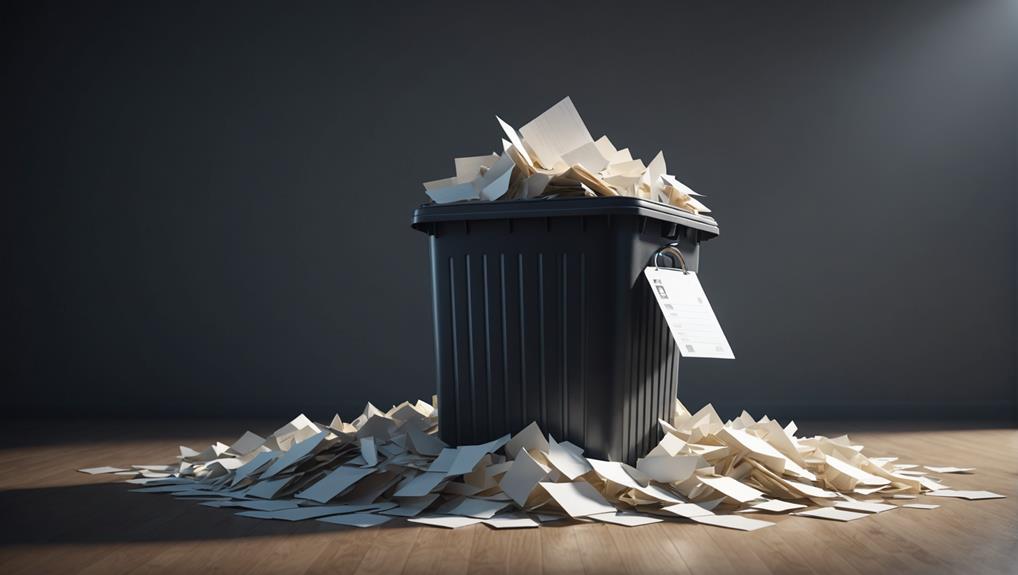
While LinkedIn's deletion process respects mutual coordination, it's important to consider how this impacts your privacy. You're part of a vast network where sharing information feels almost second nature. However, when you delete a message, the assurance that it's gone for good isn't just a personal relief; it's a communal safeguard.
Remember, the messages you send are often stored on servers even after you hit 'delete'. This means your words could potentially linger, accessible under certain conditions. It's crucial to be mindful of what you share, even in seemingly private conversations. Every piece of data contributes to the digital footprint you leave behind, which, in turn, can affect how others perceive you within your professional community.
This shared space on LinkedIn is built on trust and mutual respect. Therefore, protecting your privacy isn't just about looking out for yourself—it's about preserving the integrity of the community you're part of. By being conscious of the messages you send, you're not only securing your own information but also reinforcing a culture of privacy that benefits everyone in the network.
How to Securely Delete Messages
To securely delete messages on LinkedIn, follow these steps carefully. You're part of a community that values privacy and connection, and it's important to manage your communications with confidence. First, open your LinkedIn messages and find the conversation you want to delete. Click on the three dots at the top right corner of the message window. You'll see an option to ‘Delete conversation.' Select this to remove the entire thread.
Remember, deleting a conversation from your side doesn't remove it from the recipient's inbox. To fully protect your privacy, you might need to ask the other person to delete the conversation on their end as well.
If you're on mobile, the process is just as simple. Tap and hold the conversation you wish to delete, and select ‘Delete' from the options that appear. Be mindful that this action is irreversible – once deleted, you can't retrieve the messages.
Future of Data Privacy on LinkedIn
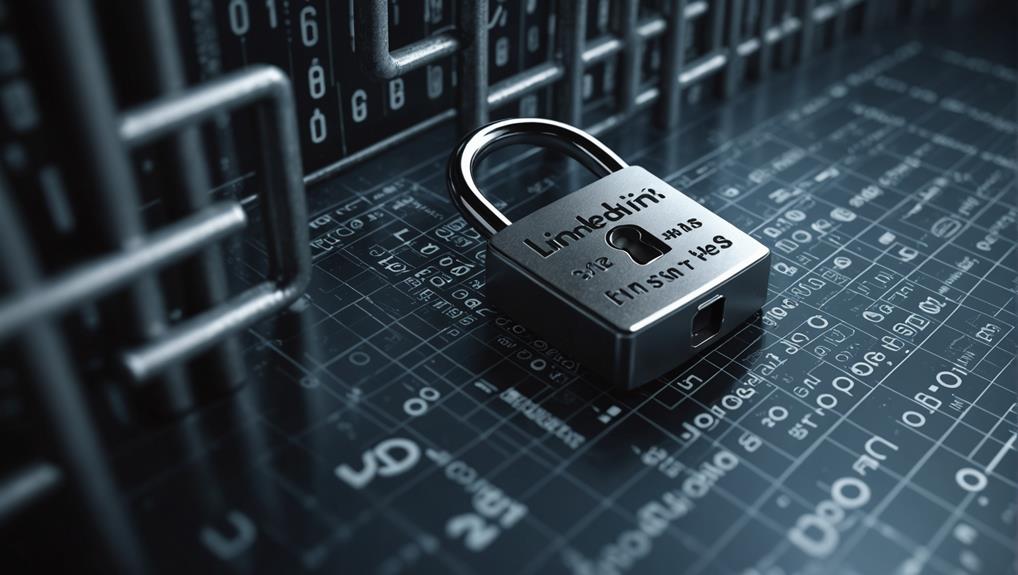
LinkedIn is actively enhancing its data privacy measures to better protect your personal information in the future. As we move forward, you're not just a user; you're part of a community that values security and trust. These aren't just features, they're commitments to ensuring that your data doesn't just feel safe—it truly is.
In the coming years, you'll notice more transparent communication and straightforward controls over your personal data. You'll have clearer insights into how your information is used and more power to control its use. This isn't just about compliance with laws like GDPR or CCPA—it's about going a step further to foster a sense of safety and belonging within our network.
Expect to see enhanced tools for data management, allowing you to review, modify, or delete your information easily. LinkedIn's goal is to be as open and clear with you as possible, creating a platform where you can connect, learn, and grow without worry.
Conclusion
As you navigate LinkedIn, remember that deleting messages doesn't instantly erase them from the system. They linger due to data retention policies and technical processes. To enhance your privacy, always think carefully before sending sensitive information. Moving forward, keep an eye on LinkedIn's updates to its privacy practices. It's crucial to stay informed and proactive about securing your digital communications, ensuring your professional interactions remain private and protected.






